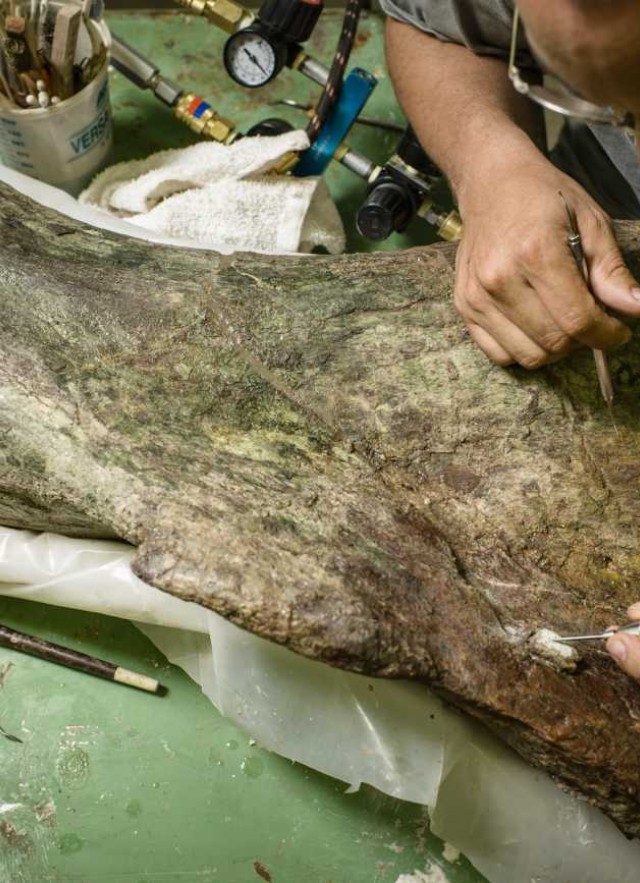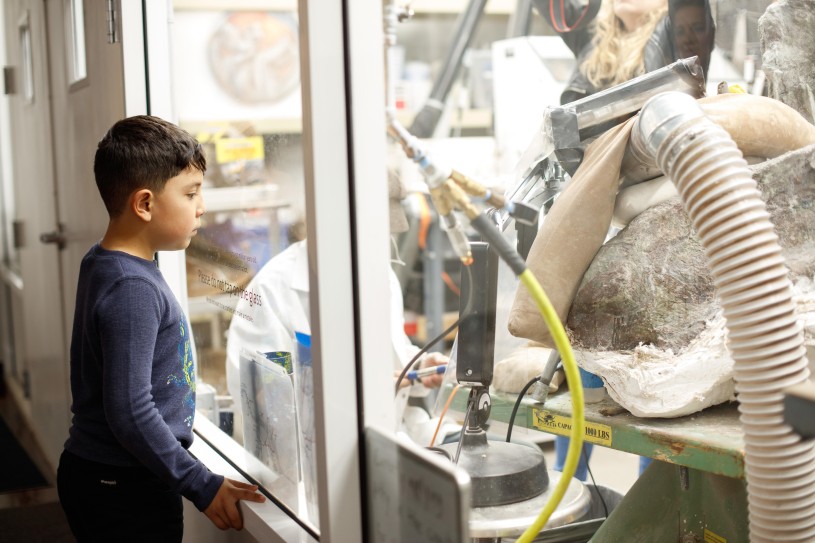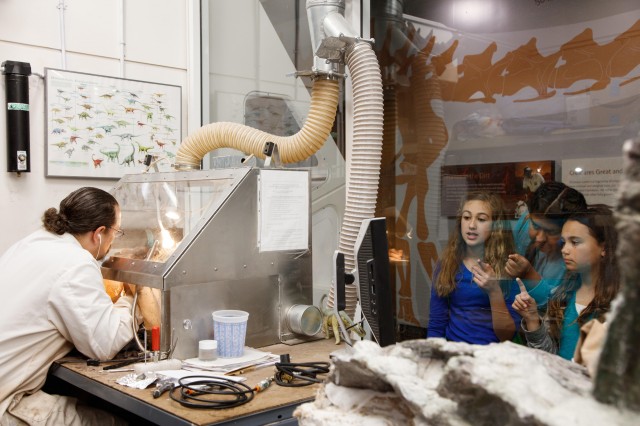Earth's Green Giant
Fossil bones of Gnatalie, the long-necked dinosaur, on display in NHM's new wing, were prepared in the Dinosaur Lab.

For more than a decade, Museum fossil hunters in the southeast corner of Utah have been excavating a collection of fossils of a Jurassic giant that are now stacking up to be something truly monumental—a large, long-necked dinosaur. Gnatalie, the Diplodocid nicknamed for the stinging gnats that pestered the team of excavators as they unearthed its remains, is displayed in NHM Commons, the Museum's new wing.
The species of plant-eating dinosaur stomped on Earth about 150 million years ago, and is one of the largest animals to have ever lived on land. Gnatalie is also a little green—such a hue is due to the mineral (celadonite) in its bones.
But before the long skeleton of this green giant could be mounted in its new home in Fall 2024, its colossal bones had to be collected, transported, and finally prepared in the Museum’s Dino Lab.
When in the field, NHM’s paleontologists and a crew of volunteers used a variety of tools, from jackhammers and chisels to tiny dental instruments. With each find, they cleared away the loose rock, applied glues to stabilize the bones, and made necessary repairs. The position of every bone was also recorded in a “quarry map." The fossils were removed along with the surrounding rock, and encased in big white plaster “jackets” for transport to the Museum, much like a cast for a broken bone. The paleontological preparators then worked diligently in the glass-enclosed Dino Lab, literally unraveling the discoveries before visitors’ eyes.

Today, when they peer into the light-filled laboratory—as long as a train car—visitors can catch the Dino Lab crew cracking open a jacket of the newest finds from the field and employing a wide array of tools to remove the long-caked-on debris. The fossil conservators wield powerful, air-blowing machines, heavy-duty tools that emit very fine powder, unleashing a tiny sandstorm that whisks off the bones.
A variety of fossils being prepared in this Lab have been excavated from all over the world, even Antarctica! Dinosaur Institute staff and volunteers work on fossils ranging from massive sauropods like Gnatalie to tiny enantiornithines (ancient birds) that have to be prepared under a microscope.
The Dino Lab is where staff prepared the bones of the spectacular T. rex growth series — an installation in the Dinosaur Hall showing a baby, juvenile, and young adult T. rex hovering over the remains of their prey. Now, Gnatalie has taken its place among the giants.
